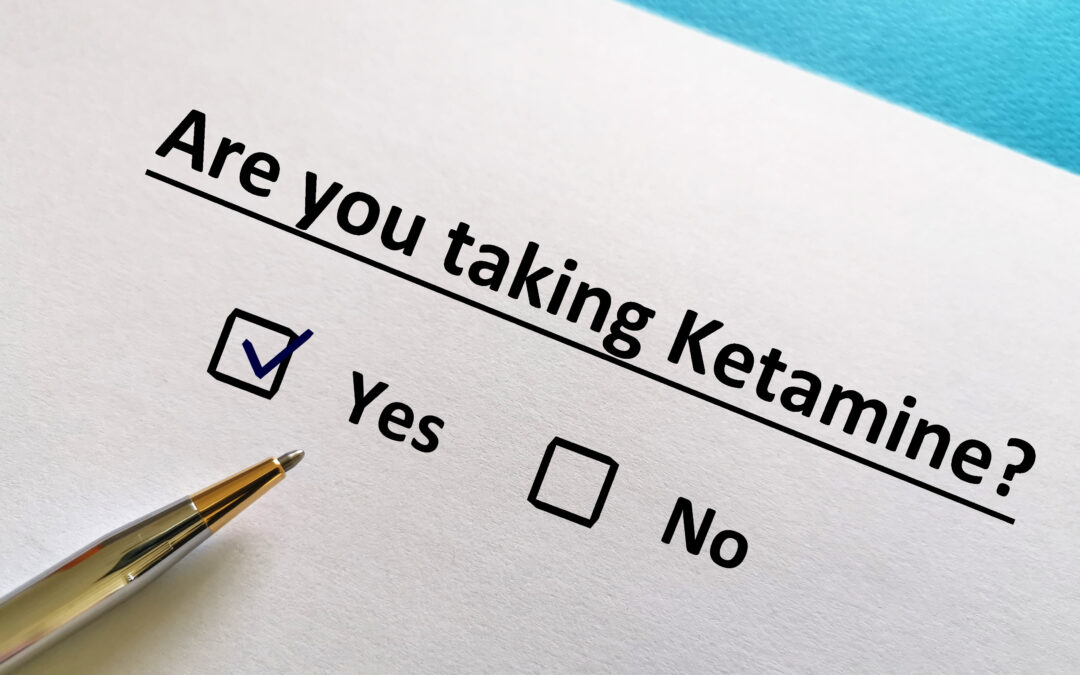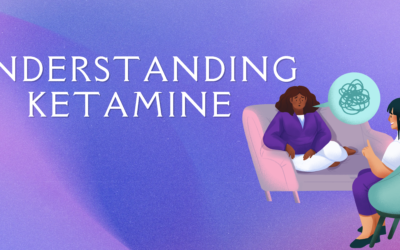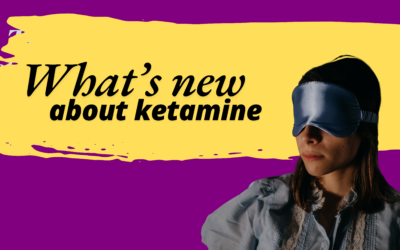Understanding the Safety and Side Effects of Ketamine Therapy
Ketamine therapy has gained significant attention in recent years for its potential to treat mental health conditions like depression, anxiety, PTSD, and chronic pain. Originally used as an anesthetic in surgeries, ketamine is now widely regarded for its rapid antidepressant effects, particularly for treatment-resistant depression. However, like any medical treatment, patients and healthcare providers alike must weigh the benefits and risks, particularly concerning safety and side effects.
In this blog post, we will delve into the safety of ketamine therapy, explore common side effects, and discuss how to manage them effectively during treatment.
The Basics of Ketamine Therapy
Ketamine works differently from traditional antidepressants, which is one reason why it’s often effective for those who haven’t responded to other treatments. It primarily acts on the brain’s NMDA (N-methyl-D-aspartate) receptors, affecting glutamate, a neurotransmitter associated with mood regulation. By enhancing synaptic plasticity and connectivity in the brain, ketamine offers fast-acting relief from depressive symptoms.
There are several forms of ketamine administration in clinical settings, including intravenous (IV) infusions, intranasal spray, and sublingual/oral formulations. Each method of administration comes with its own safety profile and potential side effects, making it essential to understand the specifics before beginning treatment.
Is Ketamine Therapy Safe?
When administered in a controlled clinical environment by trained healthcare providers, ketamine therapy is generally considered safe. The doses used in therapeutic treatments are much lower than the amounts typically used in anesthesia or recreational misuse. Additionally, protocols are in place to monitor patients throughout their sessions, which helps mitigate risks.
That said, ketamine is a powerful drug, and ensuring patient safety involves taking precautions, including:
- Screening for Contraindications: Patients with certain conditions—such as uncontrolled high blood pressure, history of psychosis, or significant cardiovascular issues—may not be ideal candidates for ketamine therapy. A thorough health assessment by the prescribing physician is crucial.
- Controlled Environment: Ketamine’s dissociative effects require that treatment be administered in a medical setting where patients are supervised. This ensures that side effects are promptly addressed and managed, minimizing risks.
- Post-Treatment Monitoring: After a ketamine session, patients typically require a recovery period to allow the drug’s effects to wear off. Monitoring post-treatment ensures the patient’s well-being and identifies any delayed side effects.
Common Side Effects of Ketamine Therapy
While ketamine therapy has shown promising results for mental health, it is not without side effects. Understanding the potential side effects of ketamine can help patients make informed decisions and prepare for their treatment sessions.
1. Dissociation
Dissociation is one of the hallmark effects of ketamine. It can make patients feel detached from their body or surroundings, almost as if they are observing themselves from a distance. This experience can be unsettling for some patients, particularly during their first few sessions.
Management: Dissociation usually subsides within an hour or two after treatment. Clinicians help manage this by creating a calming environment, often with dim lighting, soothing sounds, and supportive staff present. Patients can also benefit from breathing exercises or mindfulness techniques to ground themselves during the experience.
2. Nausea and Vomiting
Some patients may experience nausea or vomiting during or shortly after a ketamine session, particularly when receiving intravenous infusions. This side effect is more common in individuals prone to motion sickness or those undergoing high-dose treatments.
Management: Anti-nausea medications, such as ondansetron (Zofran), can be administered before the session to prevent nausea. Patients are also encouraged to fast for several hours before treatment to reduce the likelihood of vomiting.
3. Drowsiness and Fatigue
Ketamine can cause drowsiness and fatigue following treatment. Some patients report feeling groggy or “out of it” for a few hours after their session. While this is temporary, it’s important to arrange for transportation home after treatment, as driving or operating heavy machinery is not advisable.
Management: Patients should plan for a restful day following their session. It’s advisable to avoid any tasks requiring concentration or coordination for the rest of the day. By allowing the body time to recover, the feelings of fatigue typically dissipate within a few hours.
4. Elevated Blood Pressure and Heart Rate
Ketamine can temporarily increase blood pressure and heart rate, which can be concerning for patients with cardiovascular issues. However, these effects are usually short-lived and subside after the drug is metabolized by the body.
Management: For patients with pre-existing cardiovascular conditions, physicians may take additional precautions, such as adjusting the dosage or closely monitoring vital signs throughout the session. Ensuring that the patient is in a calm, stress-free environment can also help regulate blood pressure and heart rate during treatment.
5. Blurred Vision and Dizziness
Some patients report experiencing blurred vision or dizziness during or after a ketamine session. These symptoms are typically associated with the drug’s dissociative effects and generally resolve within an hour or two post-treatment.
Management: Patients should be seated or lying down during treatment and for a short period afterward to avoid dizziness-related falls. Additionally, hydration can help alleviate feelings of dizziness once the session is complete.
6. Hallucinations and Vivid Dreams
Due to ketamine’s effect on the brain’s perception of reality, some patients experience hallucinations or vivid dreams during treatment. While these are usually not distressing, they can be intense and unexpected, particularly for first-time patients.
Management: Clinicians prepare patients for this possibility by explaining the nature of ketamine’s effects beforehand. Relaxation techniques can help patients remain calm during these experiences. In more extreme cases, the treatment dose can be adjusted to reduce the intensity of hallucinations.
Long-Term Side Effects and Concerns
While ketamine therapy is generally safe, especially in a controlled medical setting, some concerns exist regarding long-term use.
1. Cognitive Impairment
With repeated high-dose use over time, there is a risk of cognitive impairment, including issues with memory and attention. However, this is more often seen in recreational misuse of ketamine rather than in medically supervised therapeutic doses.
Management: Clinicians carefully regulate the frequency and dosage of ketamine treatments. For patients undergoing long-term therapy, regular cognitive assessments help ensure no lasting damage occurs.
2. Bladder and Kidney Issues
In cases of long-term or high-dose use, ketamine has been associated with urinary tract and bladder issues. Symptoms may include bladder pain or increased urination. Again, these side effects are more common in individuals who abuse the drug recreationally.
Management: By sticking to prescribed doses and a structured treatment plan, the risk of bladder and kidney issues remains low. Patients are encouraged to report any unusual symptoms to their healthcare provider immediately.
Managing Side Effects: Patient and Provider Collaboration
Managing the side effects of ketamine therapy requires open communication between the patient and their healthcare provider. Patients should feel comfortable discussing any adverse effects they experience during or after treatment. This allows clinicians to adjust dosages, provide appropriate medications (such as anti-nausea drugs), and offer guidance on how to handle side effects at home.
Providers also play a critical role in educating patients about what to expect before their first session. By addressing concerns proactively, patients are more likely to feel at ease and prepared for their treatment journey.
Conclusion: Balancing Benefits and Risks
Ketamine therapy offers a powerful new tool for treating conditions like depression, anxiety, PTSD, and chronic pain. Its ability to provide rapid relief for patients who have not responded to traditional therapies is groundbreaking. However, it’s essential to understand the potential side effects and take measures to manage them during treatment.
With proper oversight, screening, and a carefully tailored treatment plan, most patients can experience the benefits of ketamine therapy with minimal risk. By staying informed and communicating openly with their care team, patients can maximize their chances of successful treatment while minimizing discomfort and side effects.
Understanding Ketamine
Understanding Ketamine: A Revolutionary Treatment for Depression and Beyond In recent years, ketamine has gained significant attention in the medical community, particularly for its promising applications in treating depression, anxiety, and other mental health...
Unpacking Its Transformative Role in Mental Health
Ketamine, originally developed as an anesthetic in the 1960s, has garnered significant attention in recent years for its potential benefits in treating various mental health conditions. This powerful drug, once primarily associated with recreational use and...
Whats new about Ketamine
Once known primarily as an anesthetic and a party drug, ketamine is now gaining significant attention in the medical community for its potential therapeutic applications, particularly in treating mental health conditions. Recent research has focused on its effects on...




